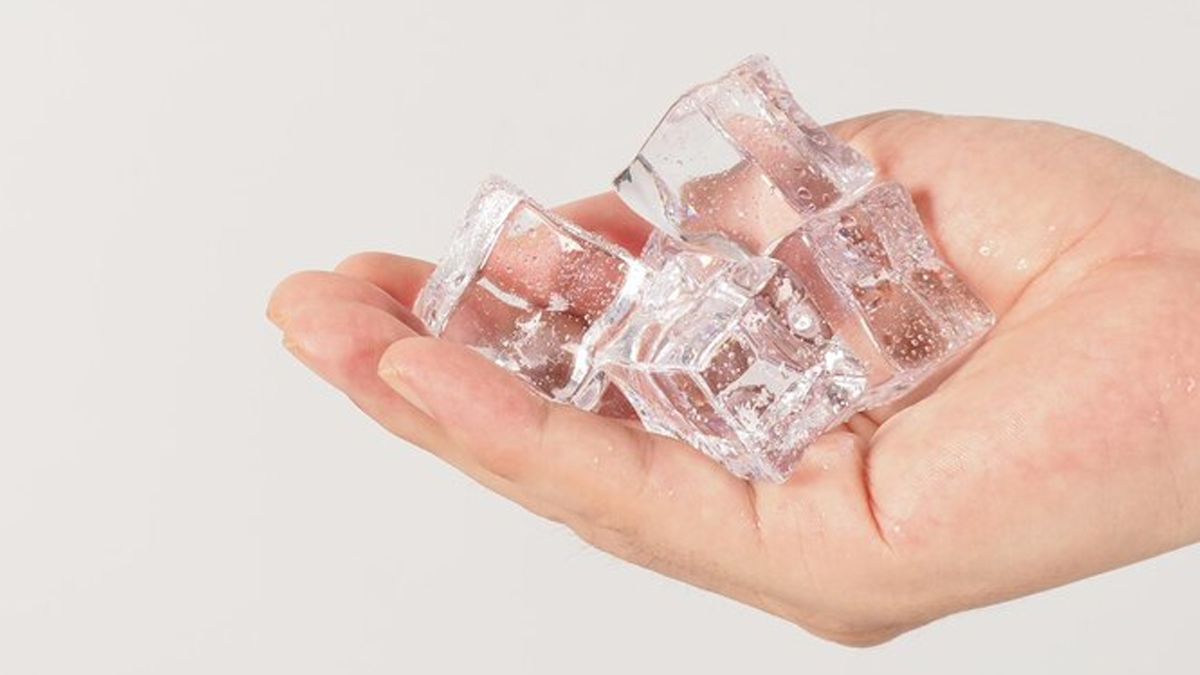
Anxiety is a common mental health issue that can manifest in various ways, such as racing thoughts, a pounding heart, or an overwhelming sense of dread. While there are numerous strategies to manage anxiety, one unusual yet increasingly popular method involves the use of ice. Whether it’s holding an ice cube, applying an ice pack, or submerging your face in cold water, the application of cold stimuli is known to have a calming effect on the nervous system. But how exactly does ice help reduce anxiety? Let’s delve into the science, studies, and practical applications of this method.
Table of Content:-
CHECK YOUR
MENTAL HEALTH

The Science Behind Ice and Anxiety Relief

The calming effects of ice stem largely from its ability to stimulate the vagus nerve, a crucial part of the parasympathetic nervous system. The vagus nerve runs from the brainstem to the abdomen, connecting several vital organs. It plays a significant role in activating the body’s “rest-and-digest” response, which counters the "fight-or-flight" mode triggered by anxiety.
When you expose your body to cold, it signals the vagus nerve to lower your heart rate and blood pressure, inducing a sense of calm. This physiological response is often referred to as the "dive reflex," a survival mechanism seen in marine mammals like seals. When their faces come into contact with cold water, their heart rates slow, conserving oxygen and promoting relaxation, a phenomenon that humans can also harness to manage stress and anxiety.
Practical Applications of Ice for Anxiety
Here are several ways you can use ice to help calm your anxiety:

Holding an ice cube: Holding an ice cube in your hand or placing it against your skin creates a physical sensation that draws your focus away from anxious thoughts. This technique, often referred to as grounding, helps anchor you to the present moment.
Ice pack on the face or chest: Placing an ice pack on your chest or gently pressing it against your face, especially around the eyes and temples, can stimulate the vagus nerve and activate the dive reflex. This is particularly effective during a panic attack.
Cold water immersion: Splashing your face with cold water or dunking it into a bowl of icy water can provide immediate relief. The sudden temperature change shifts your body’s focus to regulating its response to the cold, diverting attention from anxiety.
Ice massage: Gently massaging the back of your neck or wrists with an ice cube can provide a soothing effect, as these areas are rich in blood vessels and nerve endings that respond to cold stimuli.
A Word of Caution
While ice can be a helpful tool for managing anxiety, it is not a substitute for professional mental health treatment. It works best as a complementary strategy alongside therapy, medication, and lifestyle changes. Additionally, individuals with conditions like Raynaud’s disease or sensitive skin should consult a healthcare provider before trying this method to avoid potential complications.

Why Ice Works So Well
The key to the effectiveness of ice lies in its ability to provide immediate and tangible relief. Anxiety often involves a whirlwind of thoughts and feelings that seem intangible and uncontrollable. By introducing a physical stimulus, ice can interrupt this cycle, offering a sense of control and presence. Furthermore, the discomfort of cold can serve as a distraction, allowing your mind to take a break from anxious rumination.
Conclusion
Using ice as an anxiety management technique is simple, accessible, and backed by emerging scientific evidence. By activating the vagus nerve and triggering the body’s relaxation response, ice can offer quick relief from overwhelming stress and panic. However, like any tool, it is most effective when used mindfully and in conjunction with other strategies. If you struggle with anxiety, consider incorporating this cold-based technique into your self-care routine—it might just be the chill you need to regain control.
Also watch this video
How we keep this article up to date:
We work with experts and keep a close eye on the latest in health and wellness. Whenever there is a new research or helpful information, we update our articles with accurate and useful advice.
Current Version